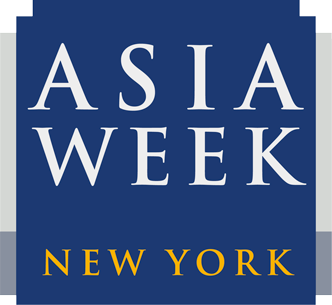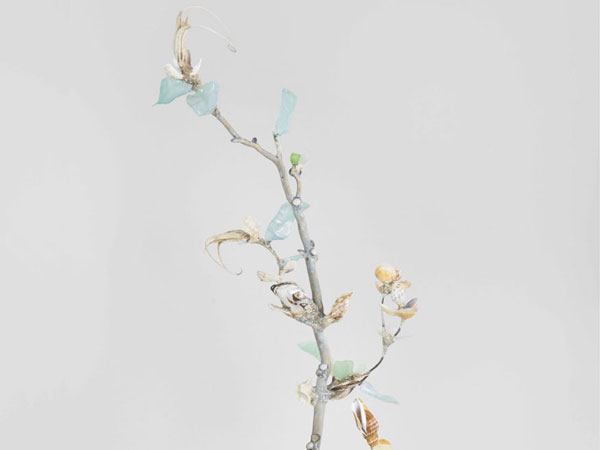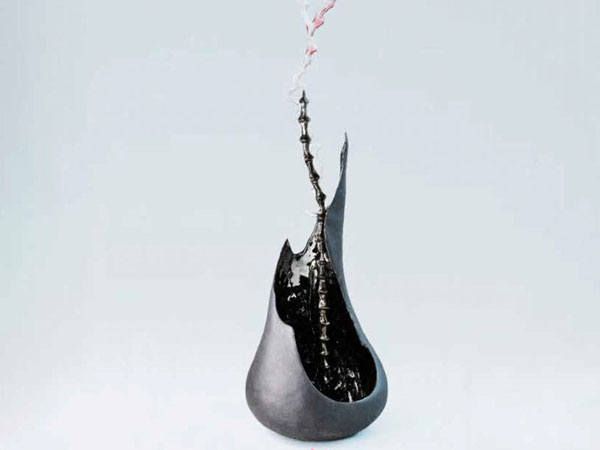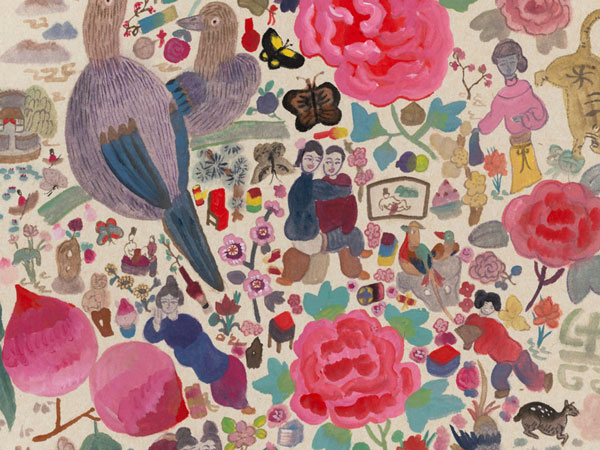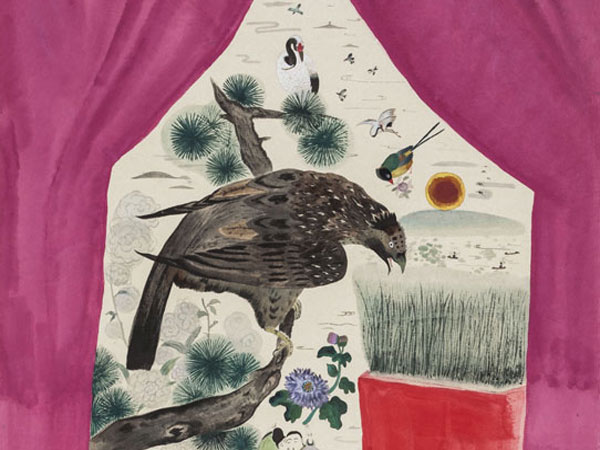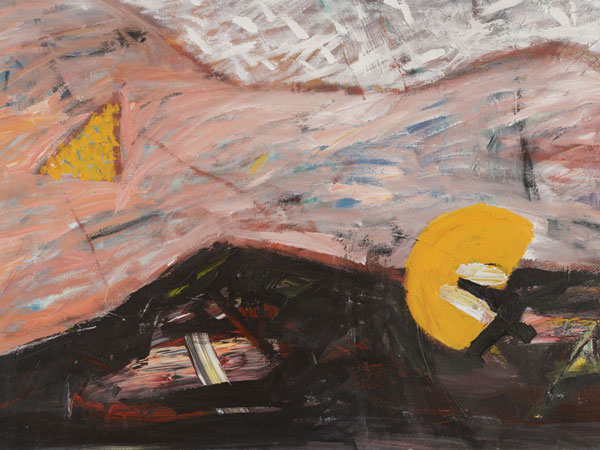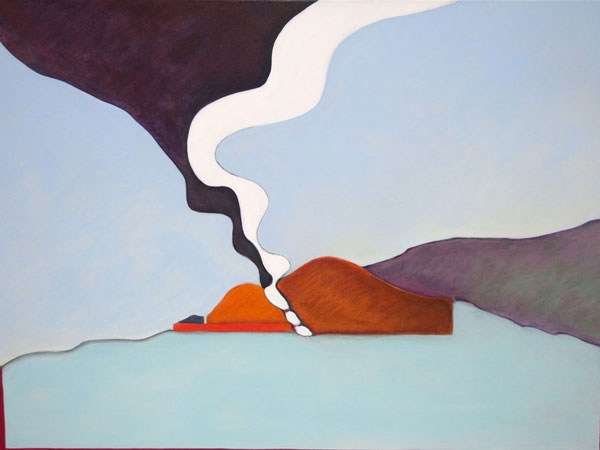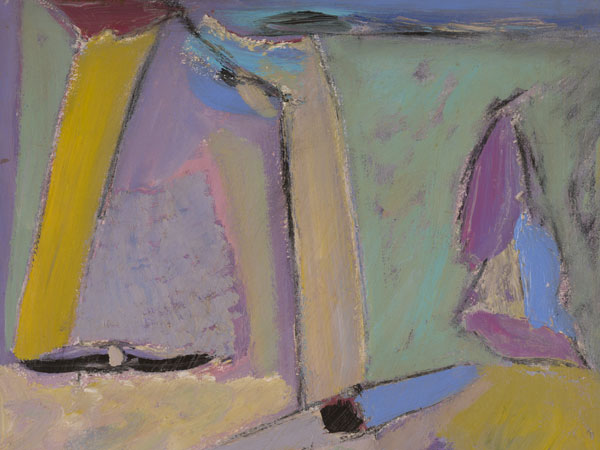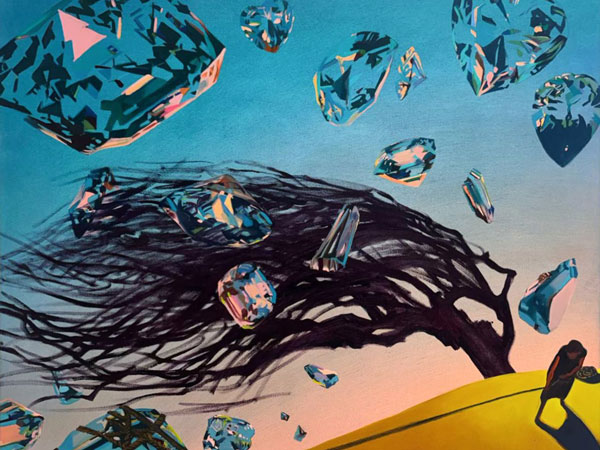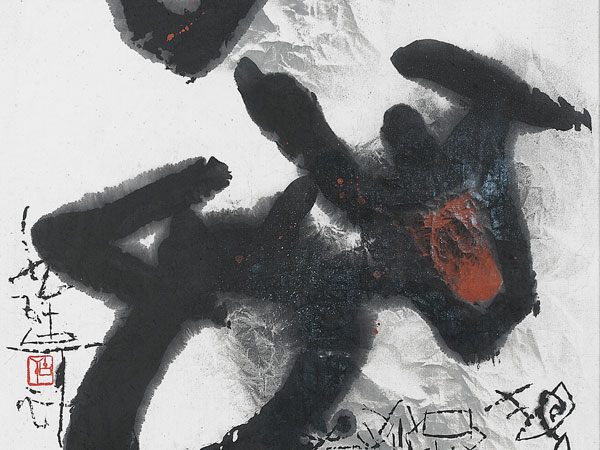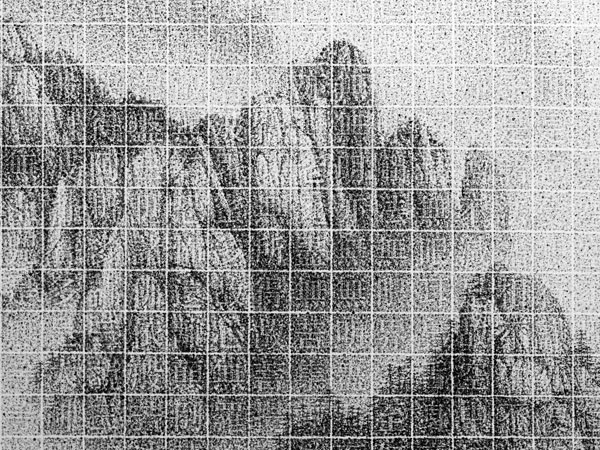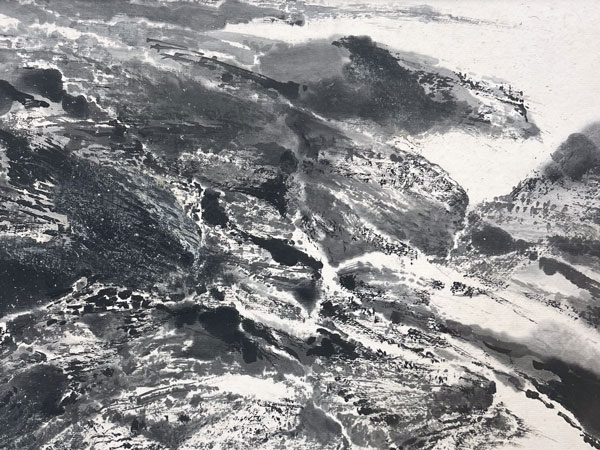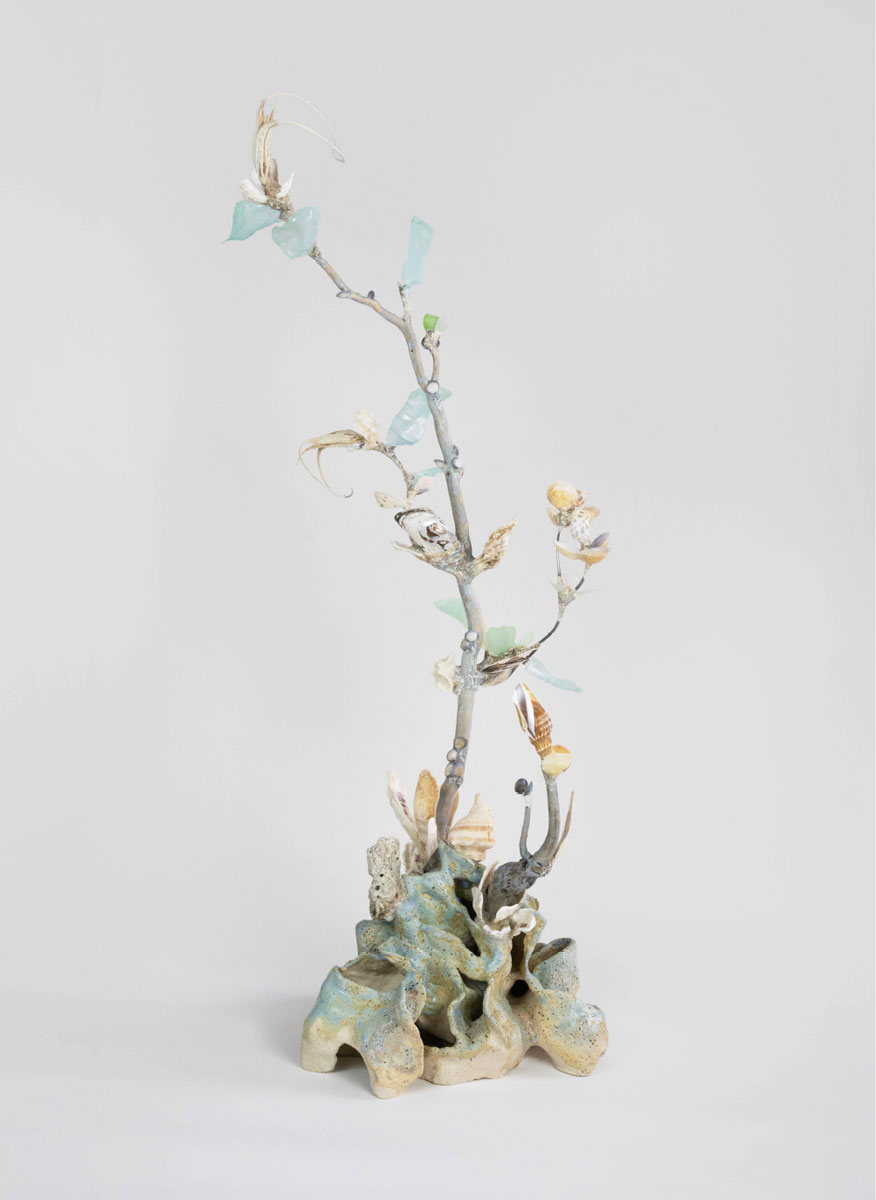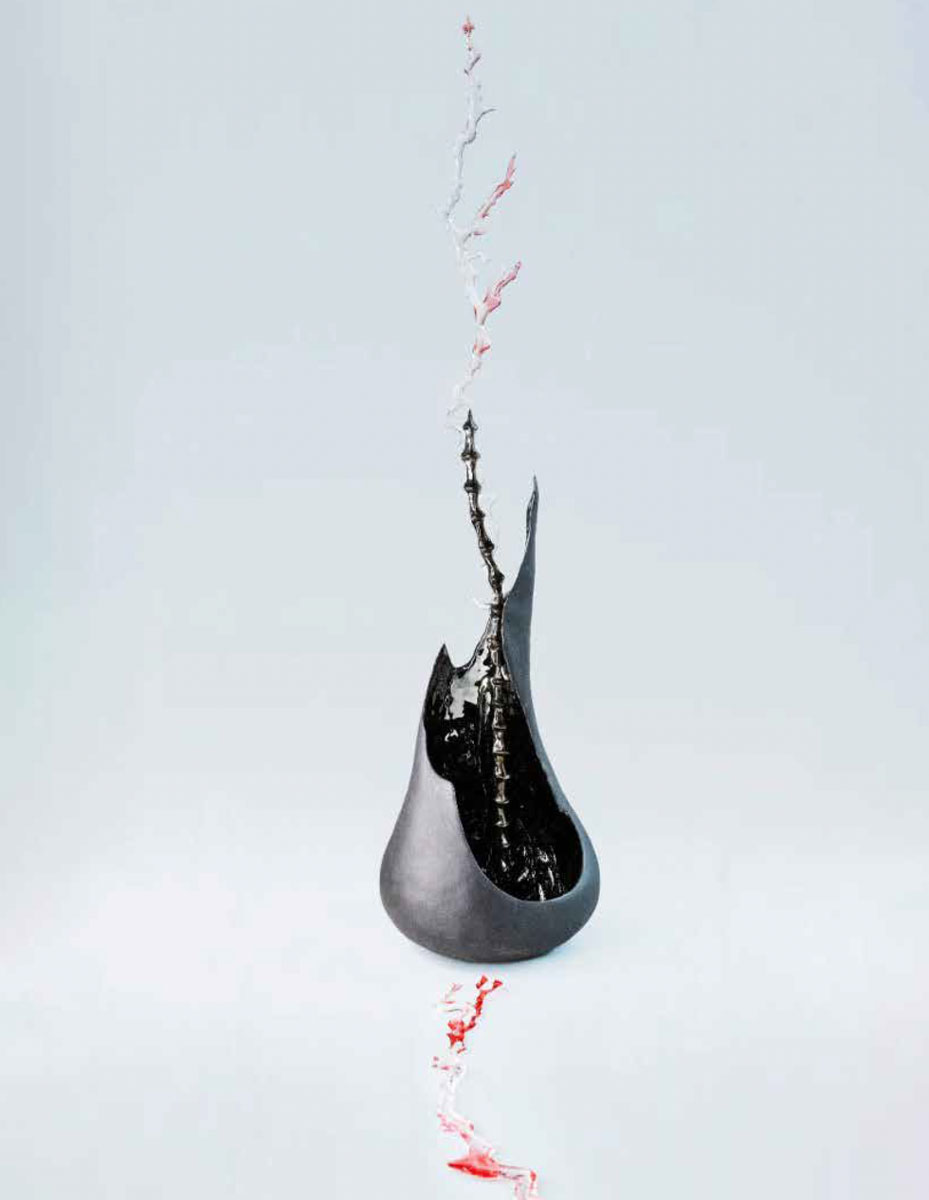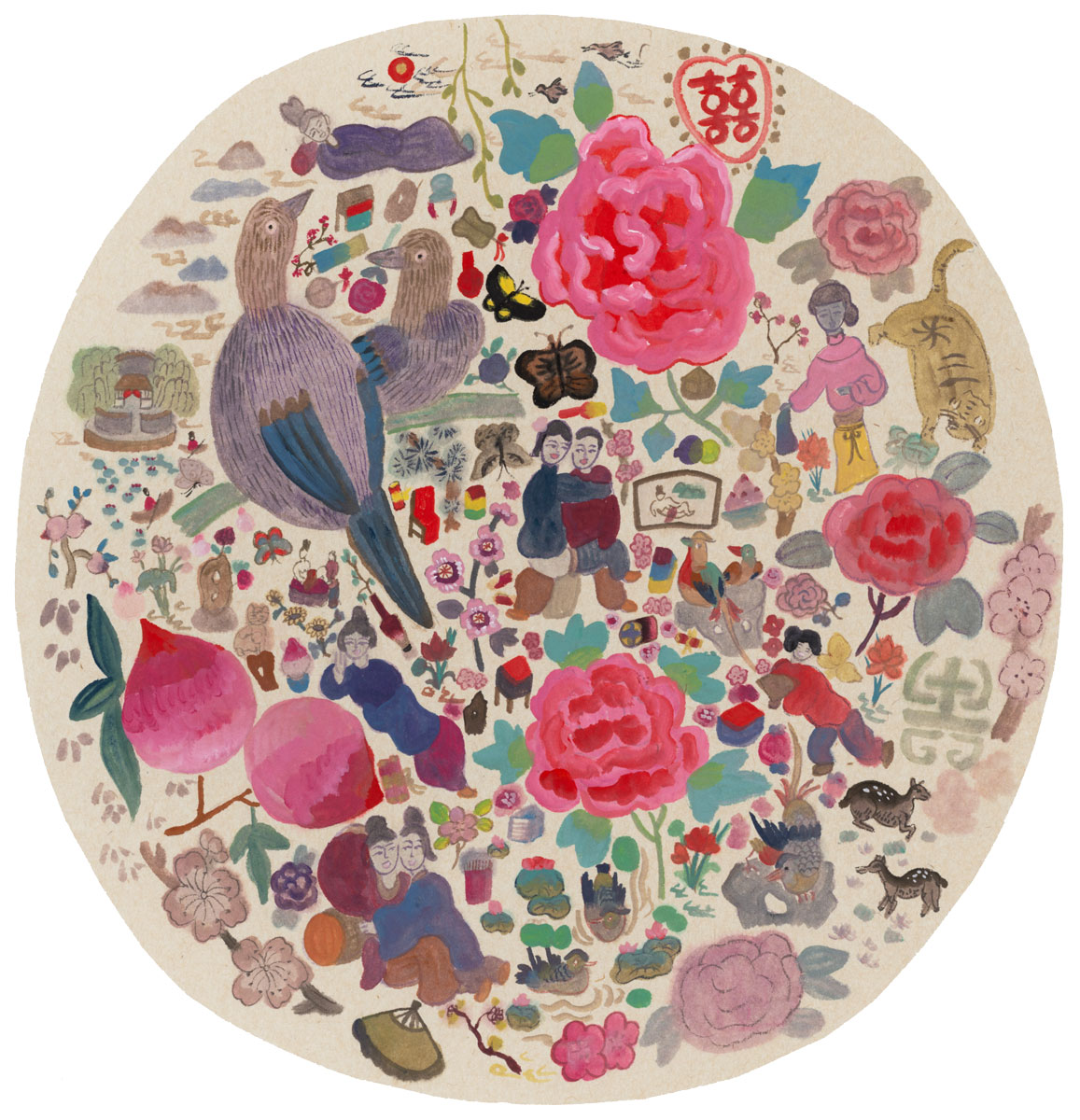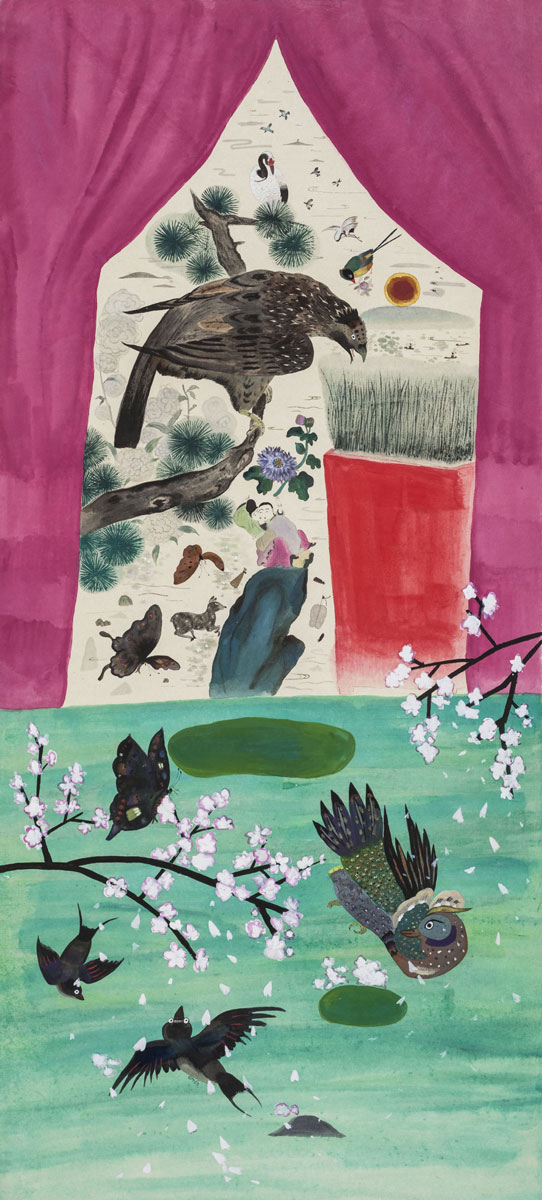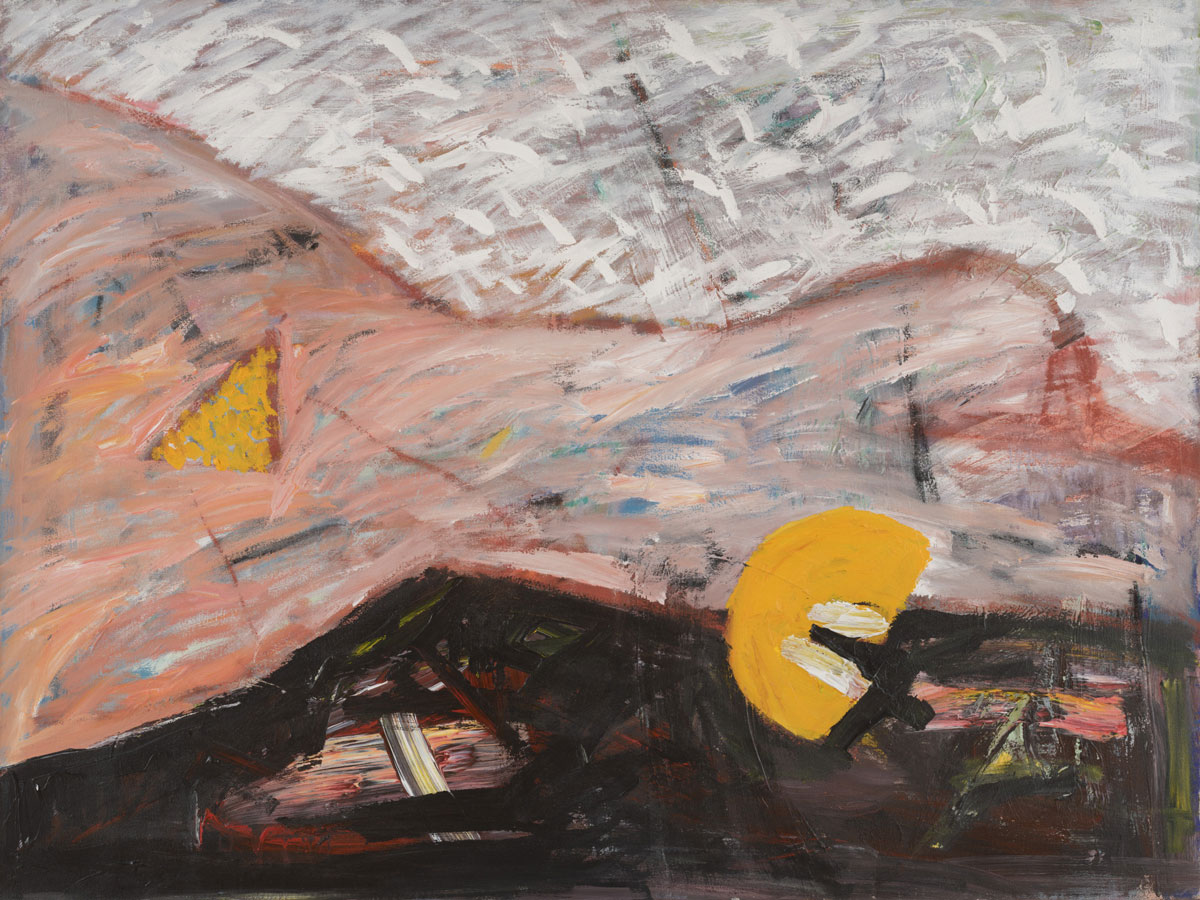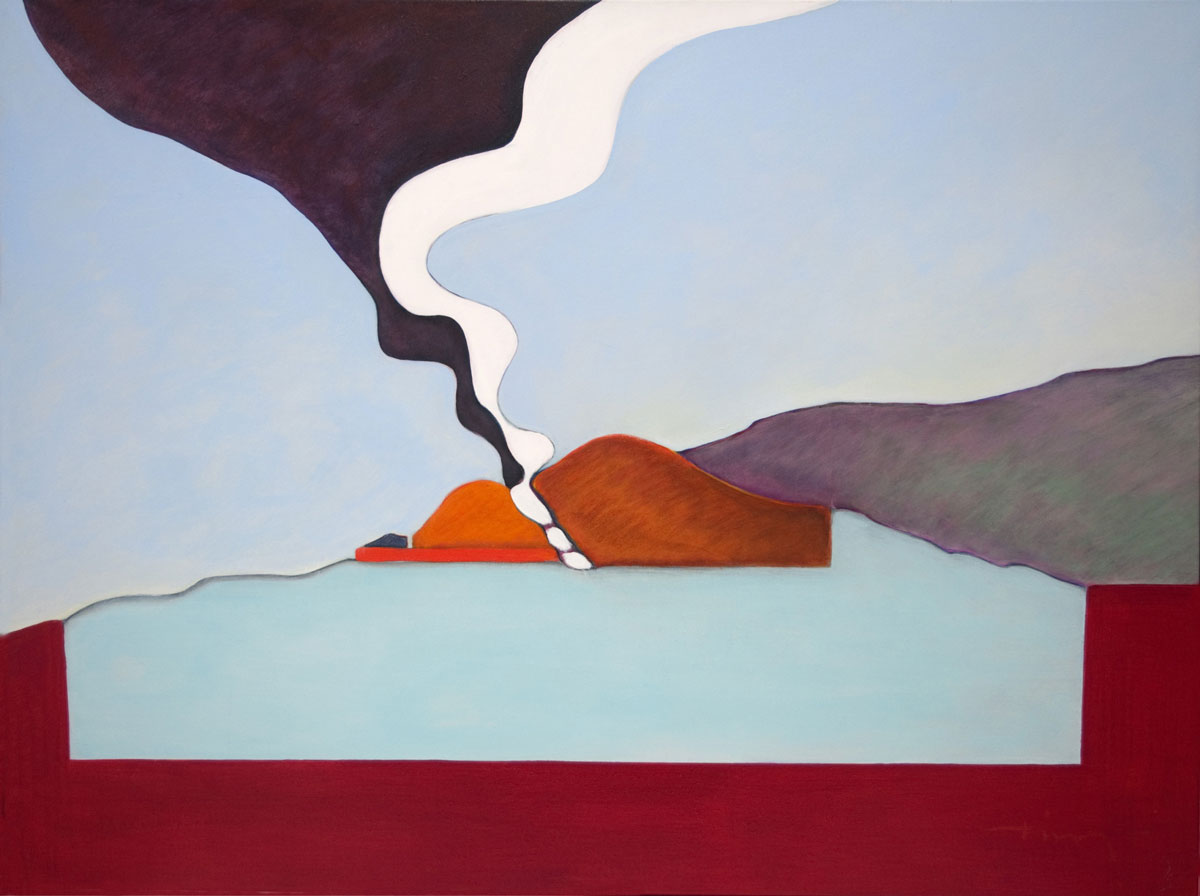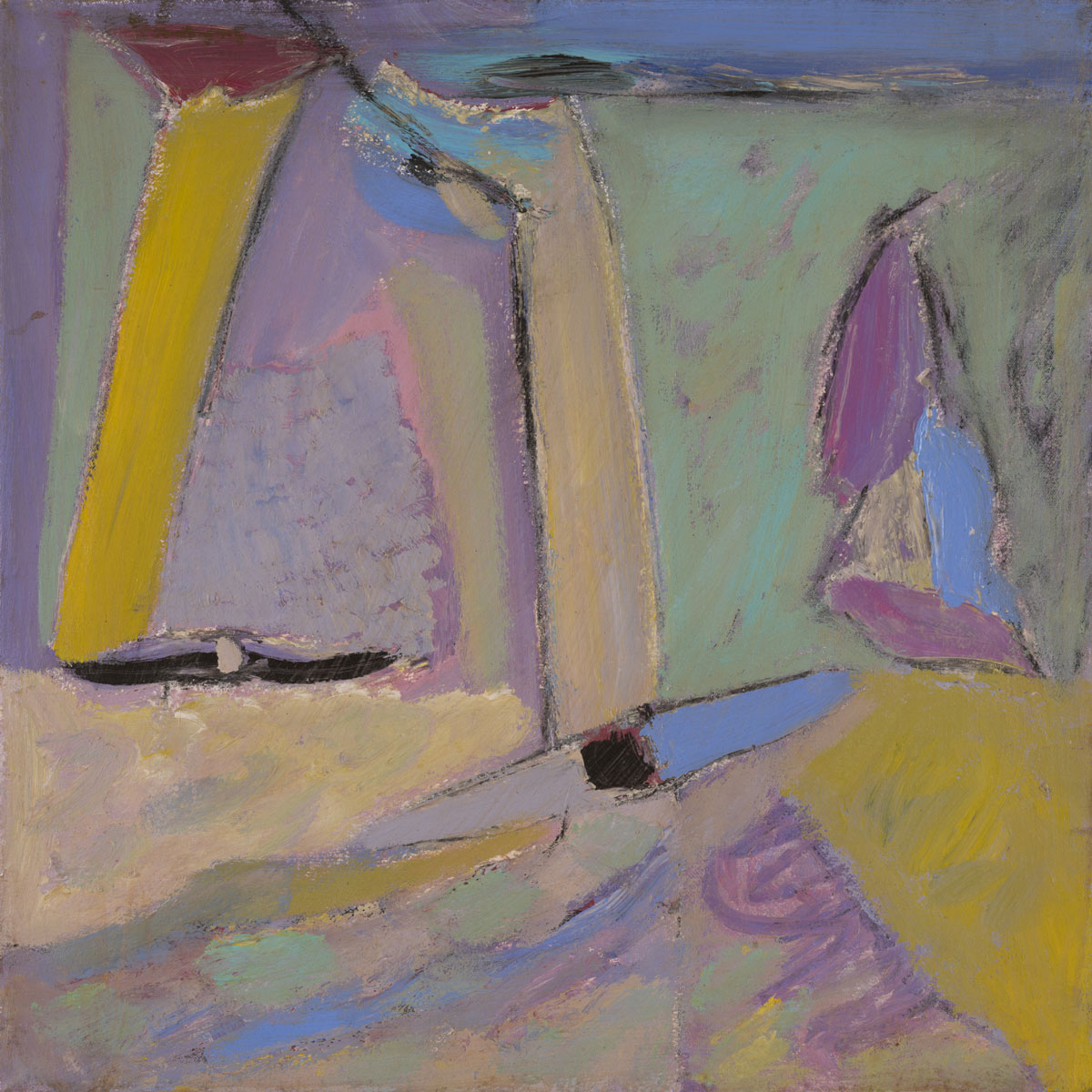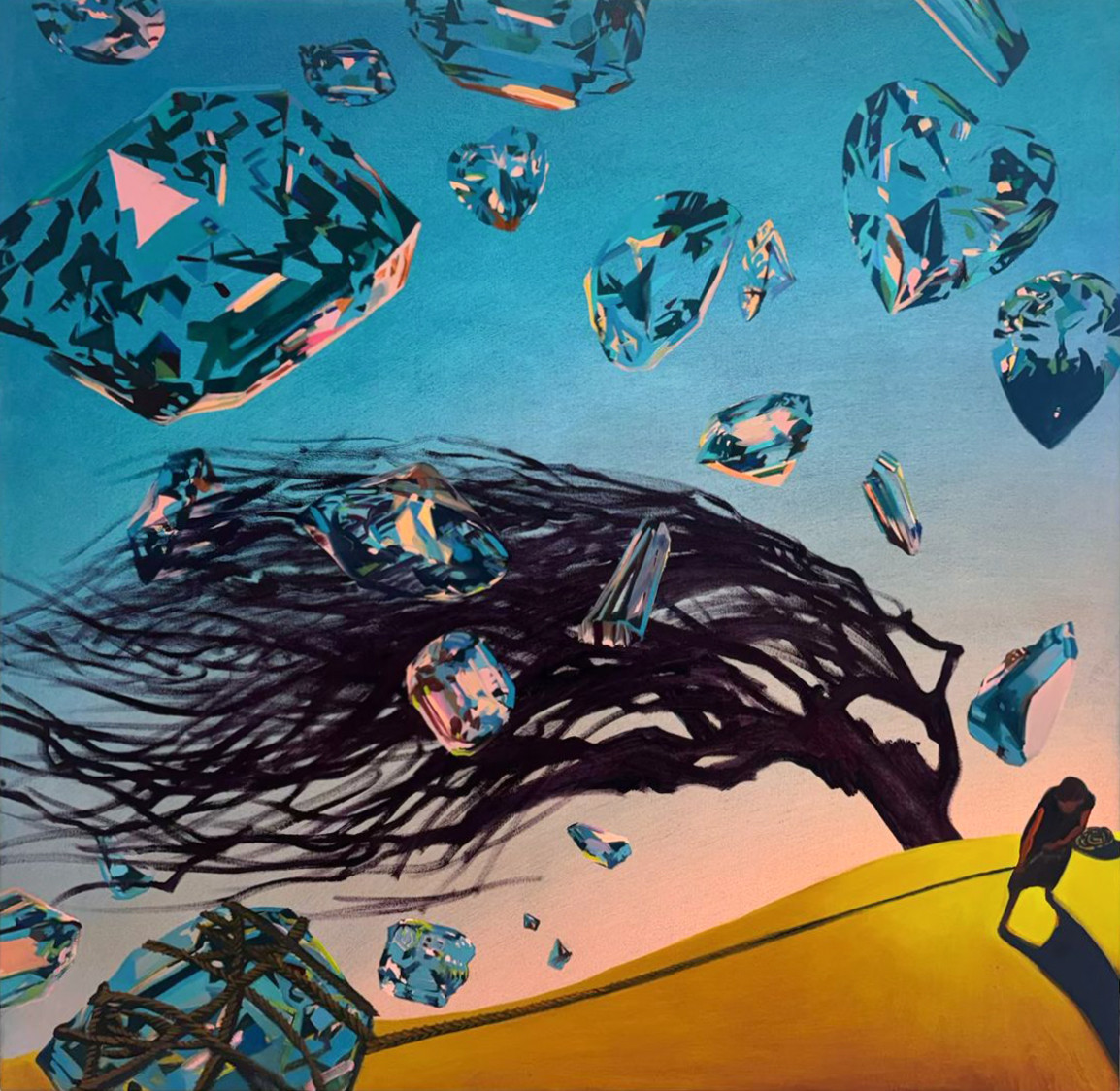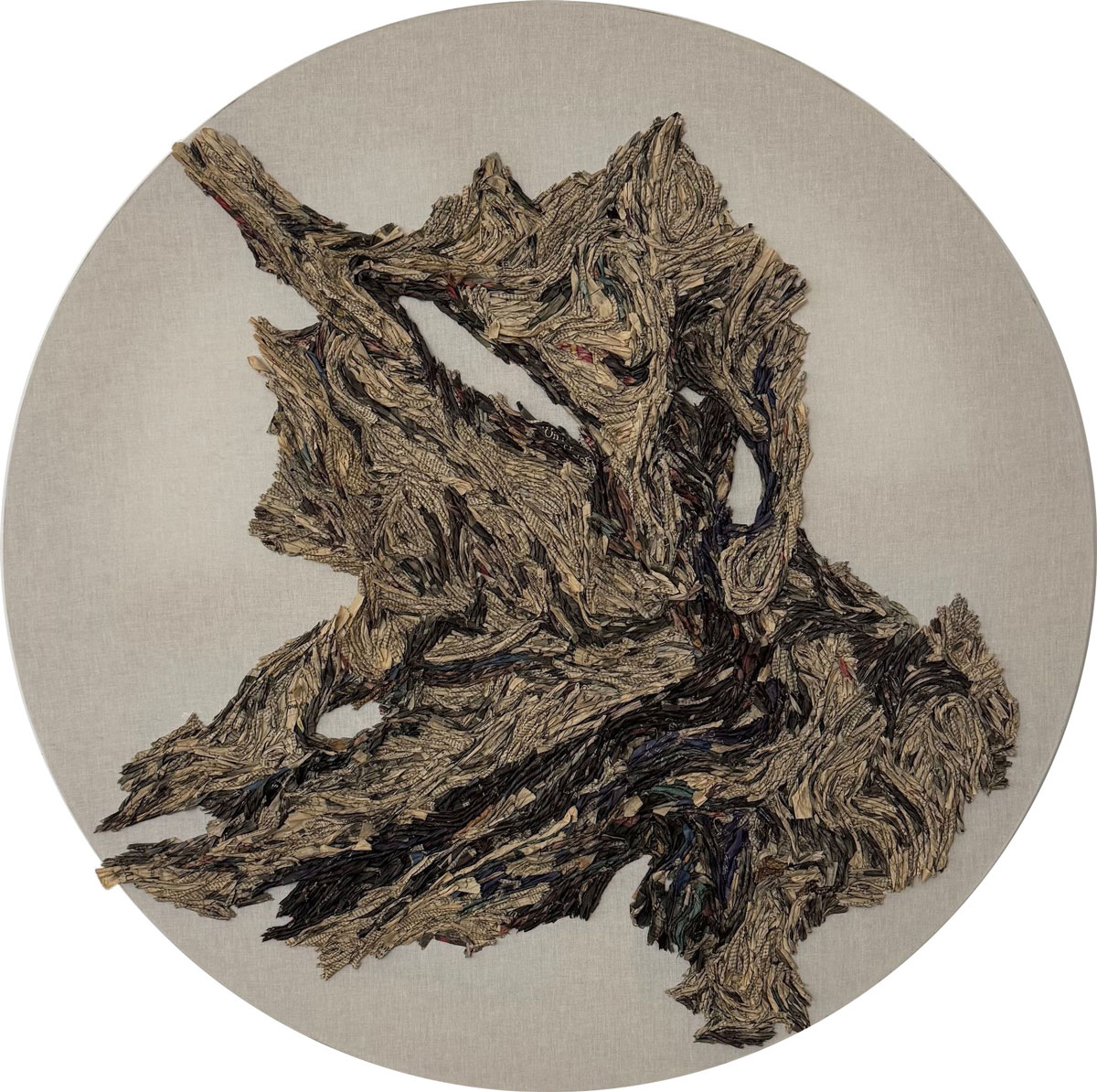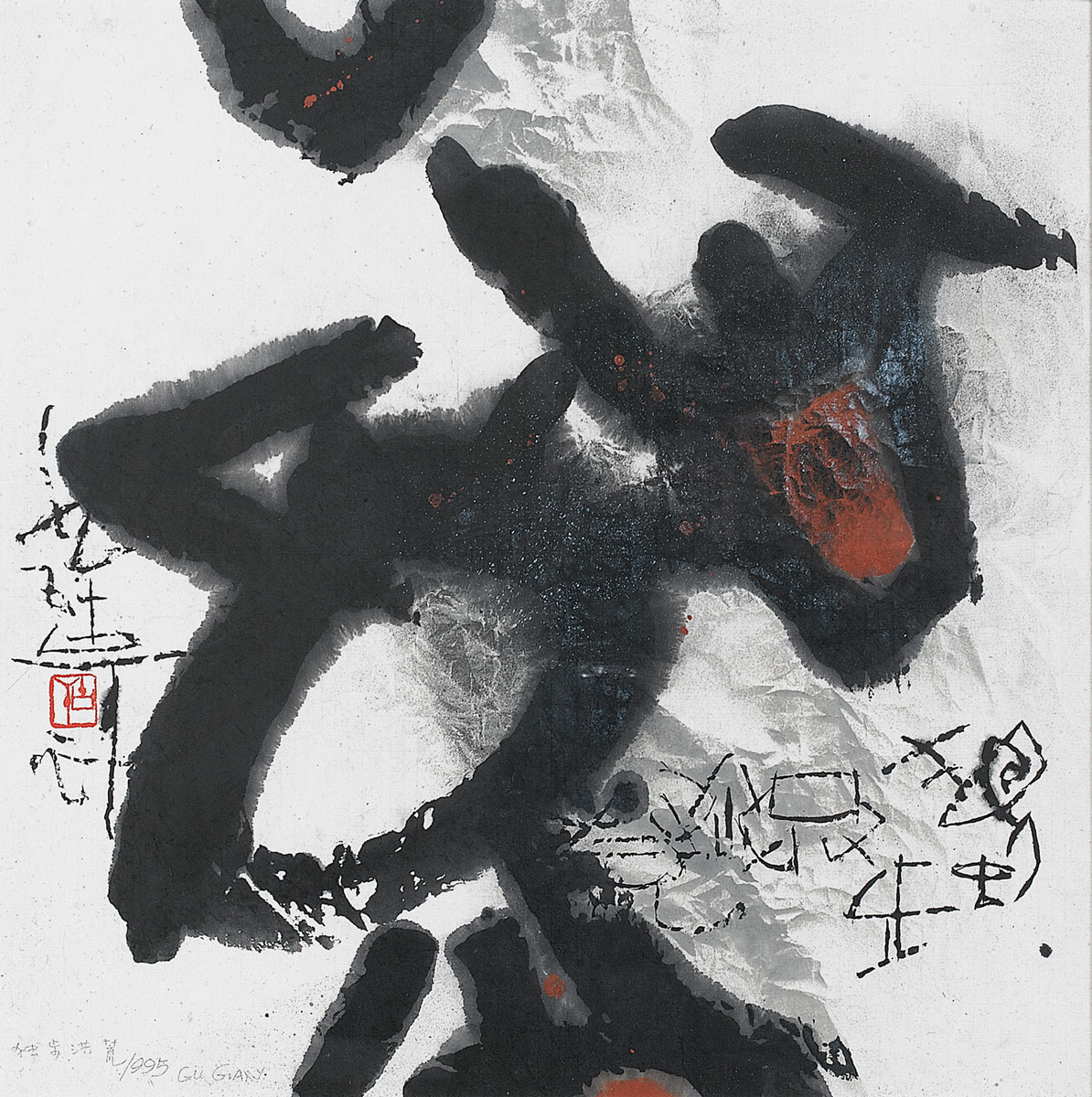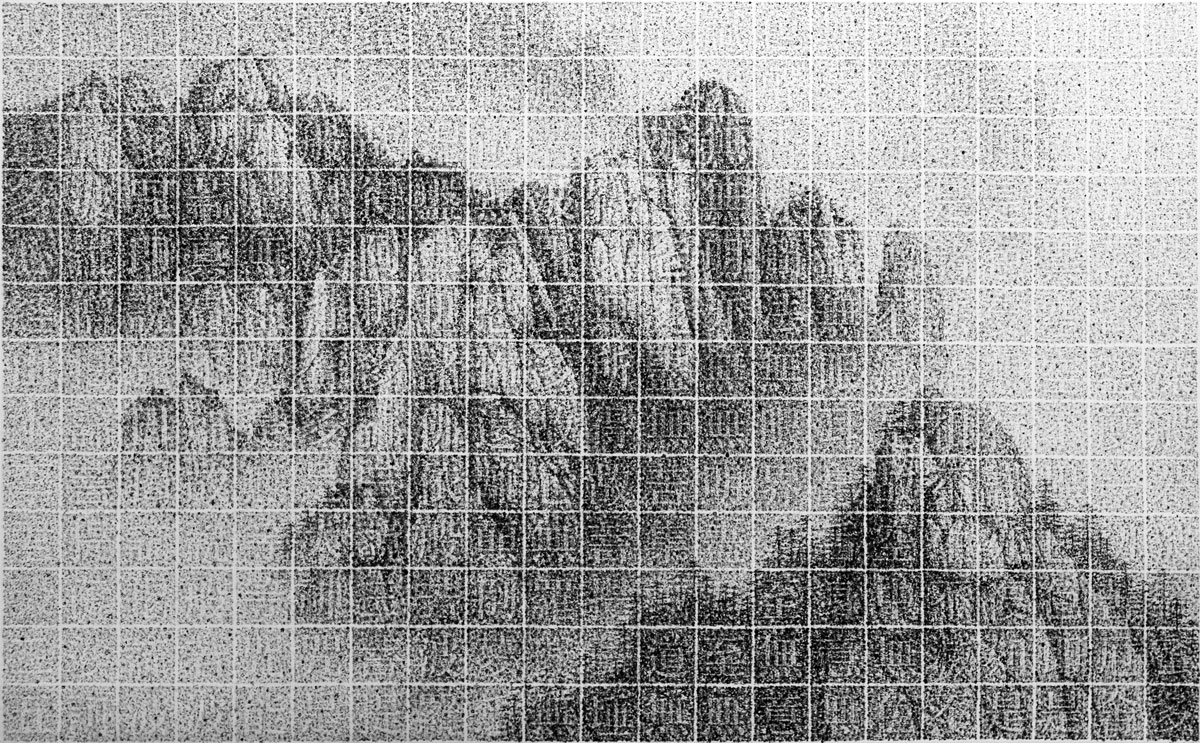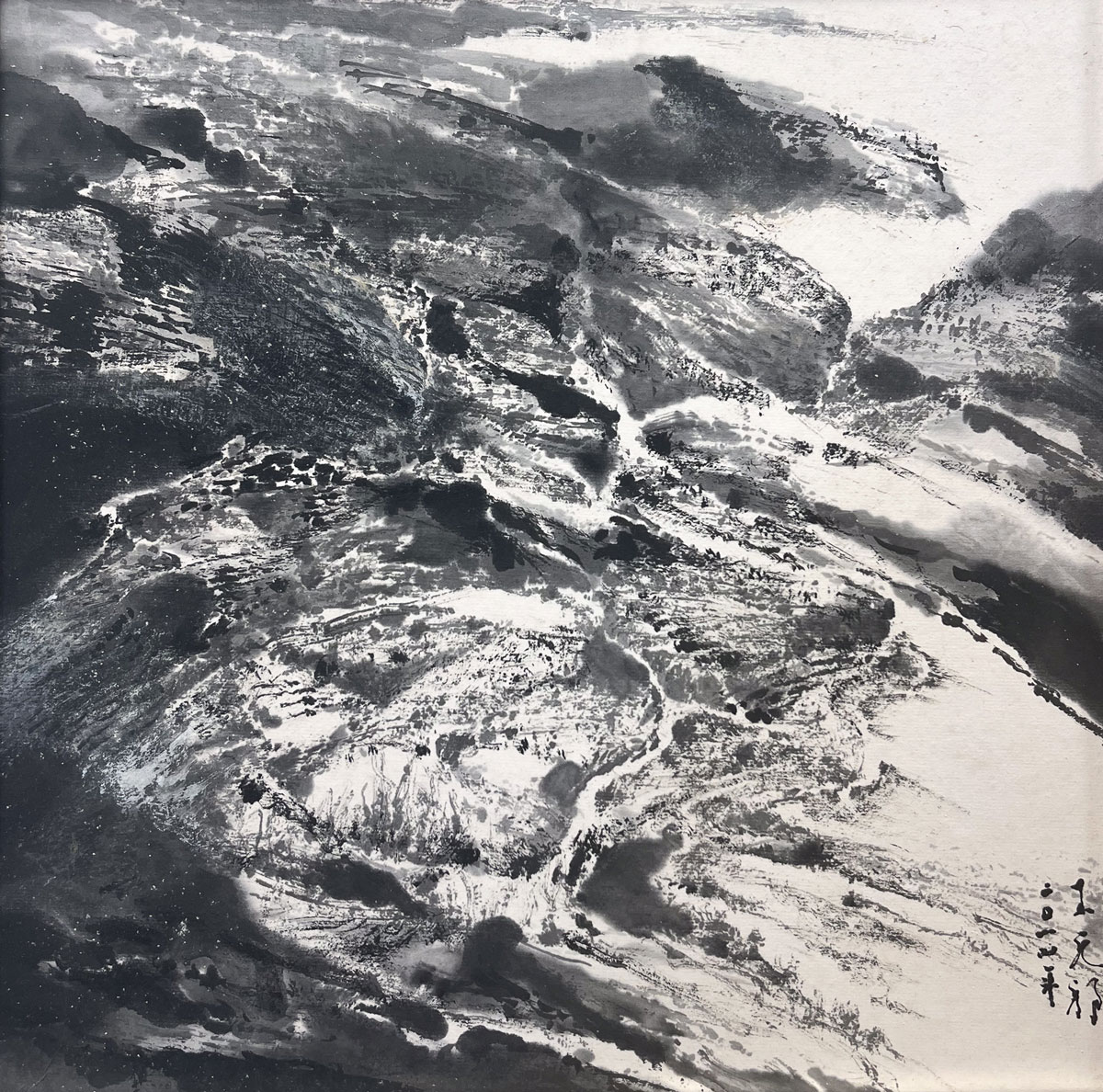NEWLY OPENED EXHIBITIONS
Post-Natural Oasis
July 10 – August 22, 2025
Opening Reception: Thursday, July 10 from 6-8pm
Wa are excited to present Post-Natural Oasis, an exhibition featuring the work of Shuyi Cao, Fu Xiaotong, KKD, Leah Ying Lin, Andrew Luk, Man Fung-yi, Anna Danyang Song, and Yi Xin Tong. The exhibition brings together a collection of sculpture, wall reliefs, and other forms of object-based art that reflect upon humanity’s relationship with the natural world. How might this post-natural world look in the future, or along an alternate geological timeline? Although many of the artists employ objects from nature, none of the works in this exhibition are ‘natural’; rather, they examine the innate human drive to infer cultural meaning from our natural environment.
Shuyi Cao’s sculptures utilize preserved shells, recycled materials, ceramics, and borosilicate glass. Her works evoke an alternate geological timeline: appearing as shed skins or eroded landscapes, the indefinable stoneware bodies of Pabulite (fin) (2024) render the unsettling poetics of deep ecology. With forms that evoke preconscious memories of primordial microscopic organisms, Core (2024) is hand-crafted with borosilicate glass, and the intermediate materiality of glass alludes to the transitional state across the threshold between the world of organic and inorganic. The Nectar of Perpetuity (2025) blends organic elements with synthetic materials—from rocks, driftwood, seashell fragments to recycled plastic waste—resembling natural growth patterns such as barnacles, coral reefs, or mineral formations. Shapeshifting without a hierarchy of natural or man-made, such juxtaposition reflects the disrupted orders of matter in the contemporary world.
Yi Xin Tong’s work also imagines an alternate timeline, a parallel civilization to our own that is only now being unearthed. Observatory II (2025) brings together a flint nodule and a steel air tank, forming a sculptural composition drawn from different geological times and material densities. The flint, discovered along the shore of Staten Island, NYC, bears a white oxidized skin—hand-engraved with a pattern central to Tong’s current sculptural vocabulary. Once used by early humans to spark fire and shape tools, the stone is now secured and slightly lifted by a small copper sphere that seals the tank with the air of 2025. Observatory is an ongoing series of instruments for seeing: they investigate sculptural processes of excavation and burial while compositionally engaging circularity, color interplay, structural tension, and asymmetry.
Fu Xiaotong, well known for her pinprick works on paper, has long been fascinated with ancient religions and their effect on humanity’s relationship with nature—this is a theme that she explores through her sculpture practice. Invoking the ancient Egyptian deity “NUN,” she probes the obscure ties between the myths, history, and beliefs of antiquity and their resonance in modern society. The resulting forms recall ancient relics, or deities from an imagined history; they reflect her interest in the clandestine interplay between human spirituality and the intricate tapestry of contemporary life. Man Fung-yi’s work also references the spiritual, but at a more personal level. Her steel sculptures are meant to evoke the idea of companionship. Her gourd-shaped pair of sculptures are diametrically opposed—one is forged with interwoven steel wires (“void”), the other is forged with steel plates (“solid”), representing ‘merging in the vast universe, two becoming one, without distinction, without beginning or end…’.
Andrew Luk’s Thale Cress is a sculptural series named after a humble plant favored by space agencies for agricultural experiments due to its sensitivity to radiation. As a test subject, the plant becomes a symbol of extraterrestrial colonization. The series incorporates Martian Regolith Simulant, a soil analogue used by scientists attempting to grow food on Mars. Also included is “liquified carbon,” a tongue-in-cheek replacement for Chinese calligraphy ink—an intentional code-switch: a material might read as “traditional” or “technical” depending on the cultural lens. Science fiction stories printed on white office paper—Ted Chiang’s Tower of Babylon, Ursula K. Le Guin’s The Ones Who Walk Away from Omelas, and Ray Bradbury’s There Will Come Soft Rains—serve as conceptual anchors. Like the materials that structure each object, the stories carry frameworks of inquiry into history, ethics, and metaphysical limits. The text is not an afterthought but a material in its own right.
Firmly positioned within science fiction, although in a completely different manner, is KKD, an artist duo comprised of Vancouver-based Lam Tung Pang and Hong Kong-based Lambert Law. Storytellers at heart, they present their character T.S.N.F. (Think Slow, Not Fast) in the form of a toy figurine. The character was created from the desire for a universal toy—although existing in another reality, it nevertheless fills the same purpose, as a comfort object that recalls one’s childhood memories. As artists who describe themselves as having ‘grown up with trauma in the post-human period,’ T.S.N.F. is an object that embodies playfulness against the pain.
Leah Ying Lin and Anna Danyang Song are both fascinated by the interwoven relationship between human, nature, and machine, but their approaches are distinct from one another. Lin delves into the human desire for conquest and the fragility of life; her chrome and glass flowers are created to examine the tension between destruction and resurrection—the endless cycle of rebirth in nature, but not true of human technology. Lin’s interest in the contrast between the transient and the eternal is evident in her fascination with the ephemeral nature of life and her investigation of cyclical and perpetual karma. In contrast, Song attempts to visualize the mystery of human connection in society through various ceramic and glass techniques: hand-building, blowing, and ceramic 3D printing. She combines and stresses the material in an attempt to ‘capture the resistance and embrace the outcome’ via the making and remaking of a specific object. Her ceramics are hybrid vessels, populated by tiny spherical forms that seem to coalesce into a miniature societal structure.
Simultaneously poetic and critical, the works in this exhibition invoke both the fragility and absurdity of our collective aspirations. The sculptures oscillate between sincerity and satire. They are crafted to appear humble, even charming, while probing the violent legacies of exploration. This layered ambiguity mirrors the hybridities of diaspora—where meanings shift, materials translate, and contradiction becomes generative.
To learn more, click here.
Wang Mengsha: Borrowed Shadows
July 10 – August 22, 2025
Opening Reception: Thursday, July 10 from 6-8pm
We are pleased to present the first U.S. solo exhibition of Beijing-based artist Wang Mengsha. Known for her ability to blend traditional Chinese painting with a contemporary sensibility, Wang reinterprets the classic ‘xieyi’ style with bold colors, playful imagery, and a touch of humor. Her work often draws on everyday objects, elegant figures, historical Chinese garden settings and scenes from nature, echoing the landscapes and culture of southeastern China.
Wang describes her paintings as dreamlike and fluctuating—like shadows that flicker in and out of view. Rather than aiming for realism, she creates imagined spaces where objects and figures change in scale and perspective. Her concept of “Borrowing Shadow” reflects this approach: using recognizable forms to build a personal, poetic world inspired by Eastern philosophy.
“My paintings describe a metaphysical rather than realistic dreamscape. The word “shadow” fits perfectly, while “borrow” lends the image an even more ephemeral and unreal quality. Everything in my work appears with shifting scale and perspective, like a dream—an illusion that drifts between fantasy and reality. It’s an expression of Eastern Zen philosophy: “Borrowing Shadow” means borrowing forms to construct my own utopian dream.”
Using a technique from traditional Chinese painting known as scatter-point perspective, Wang builds her compositions in a flowing, intuitive way. This approach allows her to move freely through memories, emotions, and ideas—rather than following a strict or linear story. Hibiscus Garden is a tondo filled with symbols of good fortune – birds, flowers, deer, scholar rocks and other dreamlike objects to invite viewers into a playful world full of curiosity and wonder. Enchanted Purple Gourd is similar, although in this piece there is a pair of bathing maidens as its central subject, surrounded by recurring characters and objects: a cartoon-like tiger, giant birds, roses, and as the title suggests, a vibrant purple gourd. Her art gently questions how we hold on to imagination in a world that often asks us to let it go.
To learn more, click here.
RECENT EXHIBITION
Josephine Shuk-Fong Cheung: A Commemorative Exhibition
June 24 – July 3, 2025
Opening Reception: Thursday, June 26 from 6-8pm
We are pleased to present Josephine Shuk-Fong Cheung: A Commemorative Exhibition, dedicated to the late Hong Kong-born artist whose compelling body of work has remained largely unseen by the public for nearly four decades.
Despite her brief yet prolific career from 1981 to 1989, Cheung’s artistic practice demonstrates a constant evolution—marked by her fearless experimentation with form, color, and composition. Her paintings deftly navigate the liminal space between abstraction and figuration, ultimately achieving a deeply personal and embodied visual language. As Professor J. J. Lee, Chair of Drawing and Painting at OCAD University in Toronto, noted: “Her use of color became more layered and complex, figure-ground boundaries blurred, and her paintings took on an embodied presence.”
Cheung began practicing art relatively late, at age 19, after moving to Canada to attend St. Lawrence College. She soon transferred to the Ontario College of Art (now OCAD University), where she trained in painting, drawing, and lithography. Her talent was quickly recognized—by her second year, she received the prestigious Loomis and Toles Scholarship. Initially drawn to abstract expressionism, Cheung’s style evolved toward a more humanist approach. A scholarship-funded stint in New York exposed her to the dynamic street art of the 1980s, especially the works of Kenny Scharf and Jean-Michel Basquiat—key influences in her move beyond pure abstraction.
“I discovered that abstract art lacks what it is to be human—I wanted to express more than pure concepts,” Cheung said in a 1986 interview. “I’ve reached a point where I don’t know what to draw on a blank piece of paper. What else is there for me to do? Maybe because I like relating to people, that’s why I turn to figuration.”
A pivotal chapter in her life unfolded in 1983 when Cheung began working as a social worker for Indochinese refugees. This period of profound engagement with displaced families in Canada coincided with her creation of Faces of Enigma, a figurative series that synthesized the emotional intensity of abstract expressionist brushwork with the psychological depth of human subjects. Her palette became increasingly vivid; her compositions more unified and confident.
Recognition of her work came swiftly. Between 1981 and 1985, her paintings were exhibited at the Barbara Gladstone Gallery in New York, Artists Space and City Hall in Toronto, the Hong Kong Arts Centre, and the Fringe Club in Hong Kong. In 1986, she was represented by T. R. Gallery in Los Angeles and began traveling more frequently across Asia.
In the final years of her life, Cheung’s work grew more introspective. Between 1988 and 1989, she developed two intimately scaled series—The “I” Series and In Limbo—both rendered on 18-by-18-inch canvases. Characterized by heavy black lines, muted tones, and a contemplative mood, these late works reflect a deeply internal dialogue.
In 1989, Cheung was diagnosed with lung cancer. A non-smoker, the diagnosis came as a devastating shock. She passed away later that year in Toronto, at just 35 years old. Her paintings, some stored in her family’s home and others left in the Québec country house of her partner, artist Andrew Lui, faded from public view. It was not until 2021, following the passing of Andrew Lui, that renewed attention was brought to Cheung’s work. This exhibition is the first comprehensive presentation of her paintings in decades.
As Jane Roos, Professor Emerita of Art History at Hunter College, writes in her essay for the exhibition catalogue:
“I never met her, but I need to add that I have taken great joy and solace from spending this time looking closely at her artworks. What I have discovered through the canvases is a person of huge talent and determination. Someone who demanded of herself that she keep experimenting, keep pushing the boundaries of her painting, keep looking, keep learning, keep deepening… Coursing through the works is a powerful sense of integrity.”
To learn more, click here.
About the Gallery
Alisan Fine Arts, a stalwart of the Hong Kong art scene since its establishment in 1981, is excited to have opened our new gallery location in New York City’s Upper East Side on November 30th, 2023. Known for its dedication to Chinese diaspora artists and contemporary Chinese ink art, we continue our legacy of bridging East and West with this exciting expansion and bringing a piece of Hong Kong’s art history to a new audience while continuing to honor the artists that have shaped our legacy.
As we open our first location in the US, the gallery is committed to working with Chinese American and other Asian American and Pacific Islander (AAPI) artists, continuing our mission of promoting cross-cultural dialogue and fostering a global appreciation for diverse artistic expressions. The gallery’s New York venture provides a unique platform for showcasing the richness of Chinese diaspora artistry, with a special focus on artists who have made significant contributions to both their heritage culture and the American art scene.
The New York City location aims to bring these conversations to a broader audience and create a space where Asian art can further dialogue with international trends and movements. The gallery will be headed up by Daniel Chen, previously the director of Chambers Fine Art. “I am thrilled to be a part of this new chapter for Alisan Fine Arts,” says Chen. “This is a gallery that has been at the forefront of Asian art for over 40 years, and it’s exciting to be able to broaden its legacy here in the center of the contemporary art world.”
Co-founded in the 1980s by Alice King, Alisan Fine Arts is one of the first professionally run galleries in Hong Kong and has been a pioneer in the field of Chinese contemporary art and new ink art, in particular, focusing on promoting mainland Chinese artists as well as established Hong Kong and Chinese diaspora artists.
We currently manage three premises, one in the upper east side of New York City, one in Hong Kong’s central business district and one in Aberdeen, Hong Kong’s southside.
